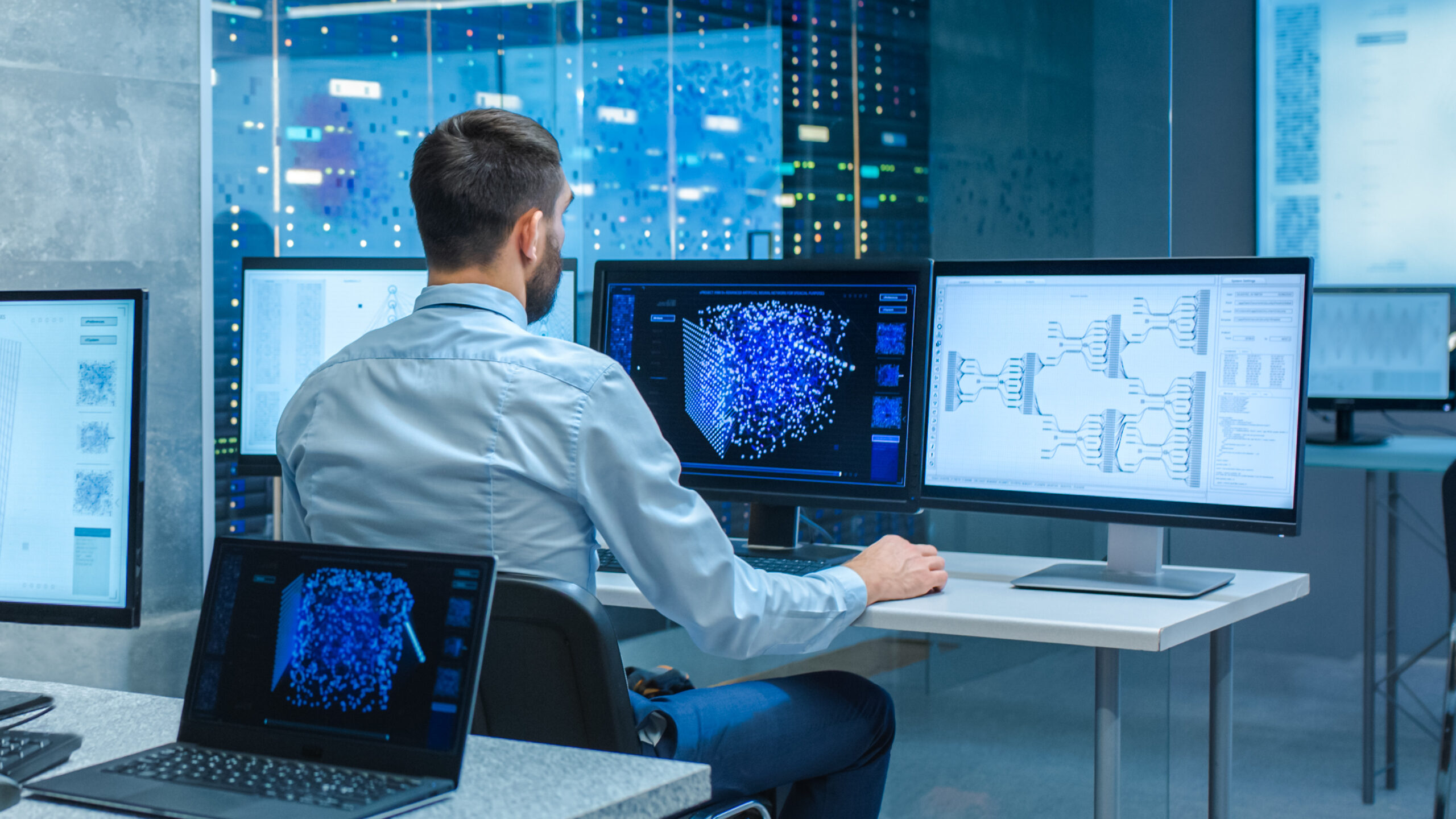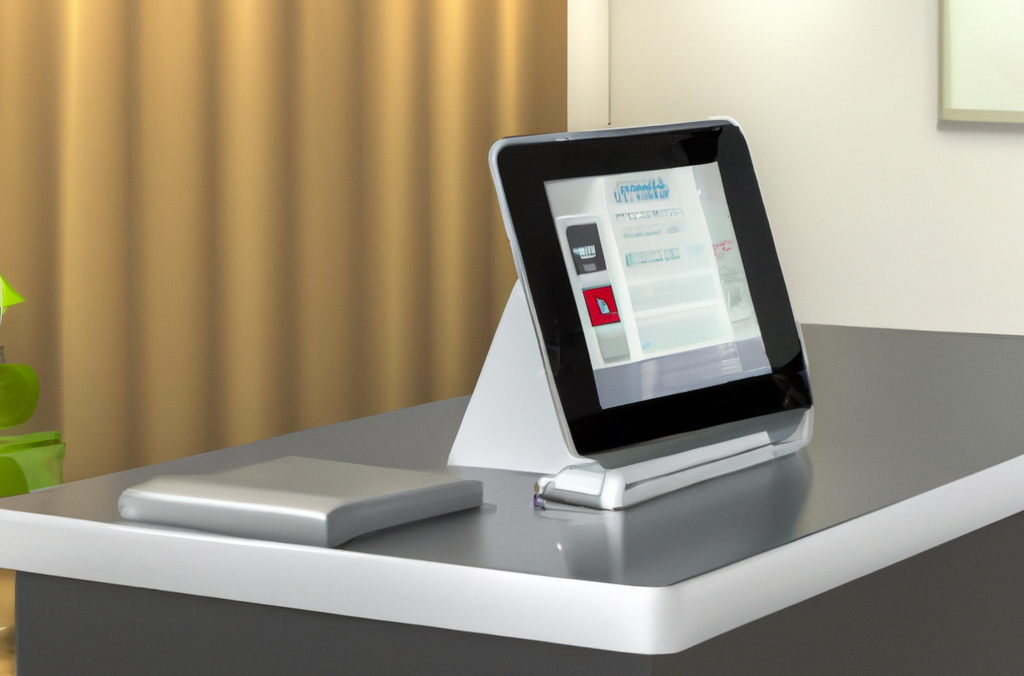What Is Physical Security and Why Is It Important? | Sign-in App

Executive Summary
- Physical security is the technologies and systems in place to protect your workplace.
- Physical security should take into account your personnel, data and intellectual property and physical assets.
- Visitor management systems and access control are core elements of effective physical security.
Whenever we talk about security in the workplace these days, there are two main forms of security that rise quickly to the top of the discussion. One is network and data security. Do your IT people know enough to keep your data safe from hackers and prying eyes? The other is physical security. What are you doing to keep your people and your property safe? Physical security is the backbone of both types of security.
What Is Physical Security?
Physical security is pretty much exactly what it sounds like; it is the systems used to secure physical space and assets. Physical security encompasses the things employees and guests actually physically touch and the people themselves. Do the right people have access? Are unauthorized people prevented from getting access?
The idea of focusing on workplace security is to lessen the probability of physical harm coming to people, property, and information. While your network security protects data from being accessed remotely, data is just as likely to be compromised in a physical way.
Organizations of all shapes and sizes need to consider their physical security. From the largest to the smallest, they all have something to protect. The primary assets organizations are protecting are:
- Property
- People
- Data
Protecting Property
All of the physical assets your organization owns are your property, and your property is important. You depend on your property in a number of different ways, depending on the type of organization you are.
 You Sell It
You Sell It
If you work in manufacturing or in some form of retail, it is likely you have inventory ready to be shipped or sold. If this inventory gets damaged or stolen, your profits are out the window.
Even if the products are not ready yet, raw materials are also valuable and, if damaged, maybe unusable and hurt production. Wholesalers sit on warehouses of inventory, and Etsy sellers have their own stashes of raw materials – from yarn to wood to fabric to metal – waiting to be turned into something amazing to sell.
- Inventory waiting to be sold
- Products to be shipped to customers/retailers
- Raw materials (metal, ink, paper, fabric, etc) used to create your product
You Rely on It to Do Your Work
Even the smallest organizations have equipment that they rely on and supplies they need to do their work. Think of all the physical objects offices use every day:
- Pencils, pens, staplers, Post-its, paper
- Shipping materials, like boxes, envelopes, stamps, postage scales
- Scanners, computers, phones
- Toner and other supplies
Consider the things factories, auto shops, and medical facilities have
- Machinery
- Tools
- Replacement parts
- Lab tests
- Diagnostic equipment
- Reference manuals
It Keeps You Comfortable
All of the physical things in your environment that keep you safe and comfortable are property, too.
-
- The building itself, with walls and a roof to block out the elements, and windows to let in natural light.
- Environmental control systems, heating, and cooling, air handling, plumbing
- Furniture, including comfortable desk chairs, desks with drawers, shelving to store supplies
- Break and restroom facilities, which may include refrigerators, microwaves, and necessary fixtures.
- Parking lots or garages that let you park close to your office.
Now think of your workplace without some or all of these things. If your inventory is gone, you now have the hassle of filing an insurance claim – assuming you have insurance – and reordering/recreating your inventory, possibly at a loss.
Maybe you’ve had the experience of coming to work and the copy machine or printer is down. Or your computer is on the fritz. Computer downtime costs businesses $1.5million annually. You have to stop working and spend unproductive time waiting for it to get fixed. If your electronic equipment or furniture were damaged or stolen, you’d be in a bind. Imagine someone came in and stole all the office supplies and the toilet paper as a prank. Not only would you be unable to work, the cost in money and time to replace it all is frustrating.
If someone damages the building, sabotages the HVAC system and it is now stifling hot, there is a cost associated with fixing it. Even if you are a small organization and the building itself isn’t yours – maybe the furniture and computers aren’t even yours! – you’d still want it protected because it is how you do your work. You lose productivity if your employees are uncomfortable or are in any way hampered in doing their jobs.
Protecting People
Your employees are your most valuable asset. Work would grind to a halt without them. The knowledge and skills they possess are not always easily replaceable. And while it shouldn’t have to be said, we’ll say it; they are people. They are human beings. Keeping them safe should be a top priority.
Certain workers are more likely to experience violence at work. These include those who:
- Work alone
- Work early or late shifts, arriving or leaving when it is dark
- Handle money, either exchanging it with the public (as in a bank or retail space) or delivering it to a bank for deposit
- Work in fields with higher risks, like health care and social services
Violence isn’t the only thing to be concerned about, though it is the first thing that often comes to mind when people are thinking about workplace security. Security and safety go hand-in-hand. Some organizations have hazardous materials on site that should only be handled by experts. Others have heavy equipment that could easily injure a person while it is in use.
Even those who work in offices likely have rooms full of cleaning chemicals, HVAC equipment or other equipment that come with their own sets of risks. There might be equipment sheds on site that contain snow plows, lawn mowers and hedge trimmers. Trying to use a piece of equipment they don’t know how to use could result in injury.
Securing the premises from vandals and thieves is also a way of protecting employees. If someone damages property or ransacks the office to steal something valuable, employees may get injured in the process. Even if no one is at work at the time of the destruction, think of the hazards that might be left behind when employees return to work. Broken glass, overturned furniture and slippery floors leave your employees at risk for injury.
Data and Intellectual Property
While most people often do not consider data and intellectual property to be physical assets, they can certainly be accessed physically, and therefore stolen in such a manner. They also happen to be vulnerable to theft and destruction via remote access, which is why so much attention is paid to internet and network security.
 However, data is just as likely to be stolen via the old school method of obtaining it in person, even dumpster diving. There are multiple ways this can occur.
However, data is just as likely to be stolen via the old school method of obtaining it in person, even dumpster diving. There are multiple ways this can occur.
- Paper files: Papers strewn on desks and in file cabinets are at risk of being stolen or photographed.
- External drives: Flash drives are small, easy to hide, and easy to transport. On-site crooks can grab them quickly.
- Employee-owned devices: Laptops, tablets, and mobile phones that contain copies of organizational materials may not be as secure as company-owned devices.
- Company devices: Even company-owned devices, if they are not secured properly, could be taken off-site and have the data harvested from them.
- Protoypes: if your organization is developing a new physical product, there may be a prototype lying around. If this proprietary item is photographed or taken, then the information could be leaked or sold to competitors.
- Listening ears: Sometimes data isn’t seen; it’s heard. Conversations are something that needs to be considered part of authorized data transfer.
How to Protect Your Organization
There are multiple ways to work to secure the premises and be proactive about security and safety. Not all of these will be appropriate for all organizations.
The strategies for protecting people and for protecting property are often very similar.
- Access control systems: These systems are designed to verify a person’s identity using credentials previously supplied by the organization. Only people with appropriate credentials are allowed to enter certain areas. Doors lock automatically and unlock only with approved credentials.
- Security personnel: In some organizations, it is appropriate to have on-staff security guards who are trained to keep an eye out and respond to threats. In others, it may be more appropriate to have an on-call security company who can send staff when there is an anticipated threat, e.g. an employee is being fired who has exhibited anger issues.
- Visitor management systems: These systems require all guests to register upon arrival, and sometimes to be issued a visitor badge identifying them as a guest. This can help prevent them from gaining access to dangerous areas. It is also a way of screening visitors, making staff aware of the arrival of a guest who is deemed a threat.
- Non-disclosure agreements: To protect data, employees and visitors alike may be required to sign documents agreeing to keep what they see and hear private. While this isn’t a silver bullet – someone with ill intentions to share organizational information likely will – it can discourage casual data transfer and give the organization a path to seek damages.
- Security protocols: Perhaps the most important part of your security plan involves guidelines people follow and instilling these guidelines in your employees. It is likely your security handbook will have many different procedures to follow. A few examples:
- Always having employees go in pairs or be accompanied by a security guard to deposit money in the bank. This is a safeguard both for the employees and for the assets. (There is less temptation for the employee to steal from the money bag if there is another set of eyes.)
- Prohibiting the transfer of company data to employee devices and/or vetting employee devices before allowing them on company systems.
- Requiring all visitors to sign in and have a visitor photo taken, and encouraging employees to preregister guests.
- Running regular safety drills and training employees on emergency procedures.
- Security cameras and alarm systems: Cameras and alarm systems, much like door locks, keep honest people honest. They also provide just-in-time notification to security personnel, law enforcement and/or emergency services in case of a problem. If there is a fire or robbery in progress, the right people can respond quickly to try to neutralize the threat. Even in the case of discovering a crime after the fact, cameras create a record that can be used for investigation and prosecution.
Big or Small, Your Organization Needs Security
Security is often incredibly noticeable at larger companies and organizations. These are the organizations that hire security guards, have cameras in every corridor, and have electronic door locks everywhere. But what about the small ones?
In some ways, a small organization may need to be even more security conscious than a large organization. Even if they cannot afford to have the latest security gadgets and hire security staff, security still needs to be foremost in their minds. Why?
Unlike a large organization that has some margin to absorb losses, small organizations often don’t. If inventory gets lost or stolen, it can be a major setback to a small business. Damaged buildings and equipment could mean weeks of lost productivity. And if an employee gets injured during a robbery – or fired because they commit the offense themselves – not only does the company have to make up for the loss of the stolen items, but it also loses the time and productivity of that employee.
While small organizations may not be able to purchase expensive security equipment, they can take the time to put less expensive security protocols in place. Things like a single camera, access control of some kind (even via lock and key), a visitor registration system, employee training, and security protocols are all relatively affordable ways to help keep the organization secure.
Organizations that don’t own their own buildings, but rather rent, might take the time to ask their proprietors what sort of security options are onsite.
Physical Security: You Need It
Every organization, from large to small, needs to have physical security as part of its culture. It can’t be an afterthought. The safety of your people and the success of your organization may very well depend on the security measures that are put in place.




